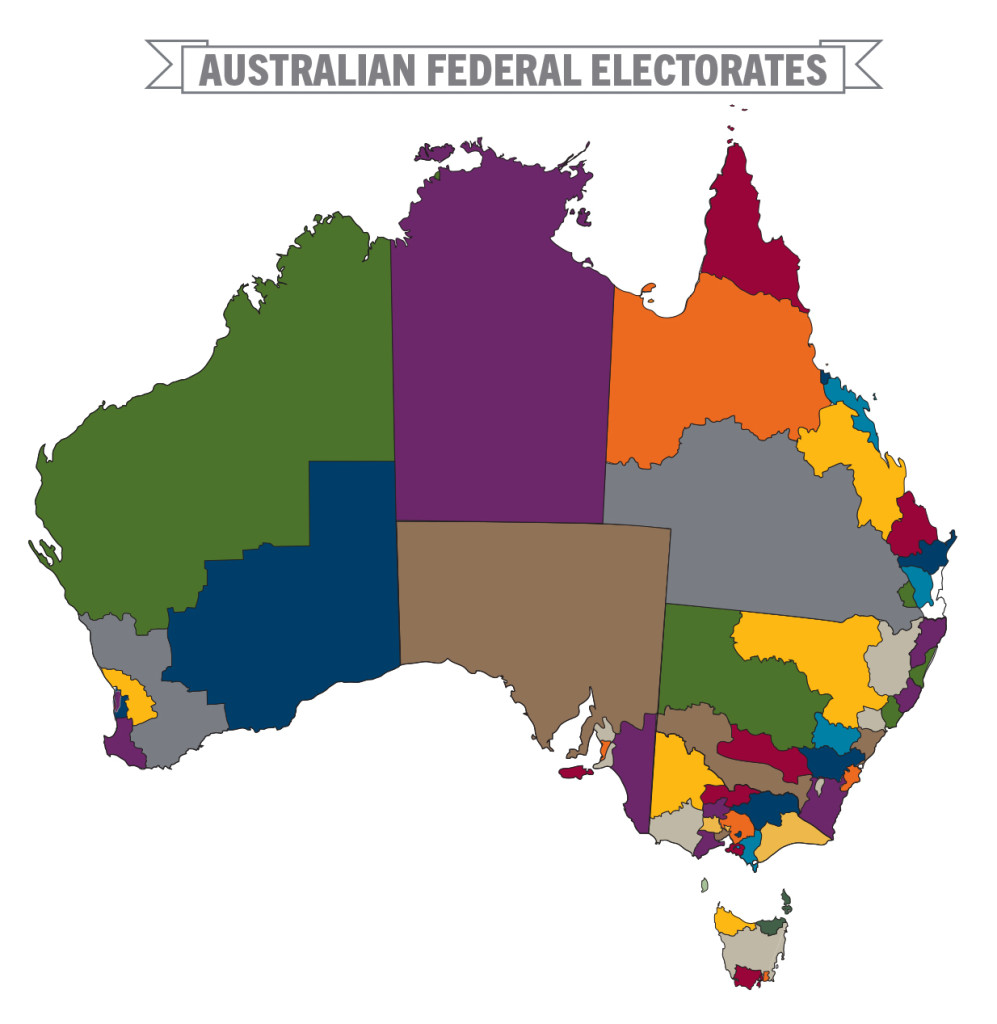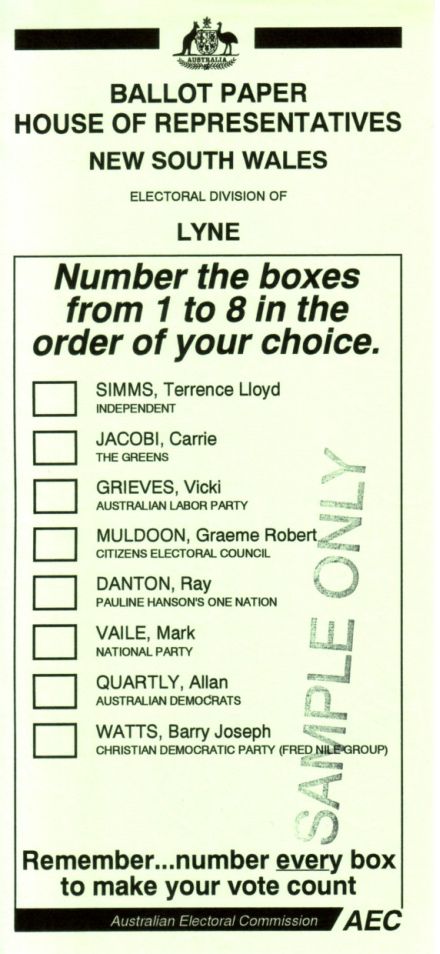Did you know you can be fined up to $170 for not voting in this upcoming election? If my maths checks out, that could buy you, like, a over a hundred $1 cones from Maccas. Don’t waste ice cream. Read this instead!
The basics
You probably had to learn about the three tiers of government when you were in primary school. Local, State, and Federal, right?
Well the election that’s set to happen in early July is a federal one, so it’s kind of a big deal.
And we’re actually one of the few democratic countries in the world that has compulsory voting, so even if you know nothing about politics, you’re still required to have your say. But it can be really boring listening to political interviews and dry news bulletins about policies that don’t really concern you. That’s why this guide is going to take you through everything you need to know in order to make an informed decision.
If you are 18 or older, you have to vote in this election. To vote, your name has to be registered on the Electoral Roll.
To check if your name is registered, or to register yourself, click here!!
If you aren’t registered, make sure you sort it out soon because the roll will close about a week or two after the official election date is announced.
Who’s who?
In the simplest terms, this election will decide whether we continue under the current Liberal Party government led by Malcolm Turnbull, or whether we change governments by voting in the Labor Party led by Bill Shorten.
However, it’s not as simple as ticking a box for Turnbull or a box for Shorten. Australia has a parliamentary democracy, so in each election, we’re actually voting for local representatives in our area or ‘electorate.’ The country is divided into 150 electorates based on the spread of the population, so one electorate usually covers a couple of different suburbs. Metropolitan areas have smaller electorates, whereas rural areas tend to be a lot bigger.
You can find out which electorate you’re in here.
What do I have to do?
Right now, you need to make sure that you’re enrolled to vote!
Enrolment closes soon, and you don’t want to have to be chasing up government forms and paperwork when you’ve got school and other commitments to worry about.
If you’re still 17 or under, you don’t have to worry (though you may as well enrol now so that you’re on the automatic waiting list for next time).
Your parents may have already sorted this out for you, but you can double check here just to be on the safe side.
How does the voting process work?
On the day, you’ll go to a local polling station (usually set up in nearby primary schools or community centres). You don’t need to bring any ID; they’ll just ask you for your name and address at the door. There’ll also be a whole bunch of people outside handing out flyers telling you ‘How to Vote for Labor’ or ‘How to Vote for The Greens’ – grab one for whichever party you prefer, or just take one of everything if you want.
Then, inside, you’ll be given two pieces of paper: a small green sheet for the House of Representatives, and a long white sheet for the Senate.
If you don’t know the difference between the House of Reps and the Senate, there’s a neat glossary of political jargon here that explains all of this terminology.
The House of Reps ballot is where you get to select the person you want to represent your electorate. You have to number all the boxes here in order of your preference.
This is where those ‘How to Vote’ cards come in handy, because certain political parties will want you to number your preferences in a certain way. For example, Labor will usually recommend you put Labour as your first preference, and The Greens second (since The Greens are more likely to support Labor in elections). Whereas the Libs might list The Nationals or a Family First candidate as their recommended second and third options since those guys are more closely affiliated with the Liberal Party. Or you can disregard those ‘How to Vote for ____’ pamphlets entirely and just number things according to your own preferences – that’s fine too!
Then there’s the white voting card for the Senate, which works a little differently. Luckily, they’ve changed the rules this year to make things a little easier to understand.
You have two options with this voting card; you can either:
• number at least six boxes above the line for the parties or groups of your choice, or
• number at least 12 boxes below the line for individual candidates of your choice.
So you either number the parties above the line, OR the individuals below. Unless you’re especially keen on a particular candidate though, I’d recommend going for the first option: at least six boxes above the line. Your first few preferences (1-3) are the most important, so think about which parties deserve your vote. Most people tend to vote for the Senate candidates in the same way as they do the House of Reps (i.e. if you voted for your Labor candidate on the green paper, you’ll probably want to vote for the Labor Party in the Senate, presumably.)
Once you’ve filled them in, pop them in the right boxes, and you’re done.
Congrats on fulfilling your democratic duties! If you’re lucky, there’ll be a sausage sizzle outside the polling station to reward you, in keeping with Aussie tradition.
What if I can’t make it there to vote?
You also have the option of pre-poll voting where you can cast your vote sometime during the week leading up to the election. But you may have to travel a bit further to find a place to vote since there’s usually only one or two pre-poll stations open per electorate. Just google ‘pre-poll voting + your electorate‘ and you should be able to find where to go.
How do I know who I should be voting for?
This is a tricky question, and unfortunately, the websites for political parties and the informational material they put out is often really biased and hard to decypher.
Luckily, there’s a survey you can fill in over at isidewith.com that will help you work out which political party you’re most closely aligned with. Just plug in your opinions about various issues and debates, and it’ll tell you which party best suits your ideology.
A lot of people falsely assume they’re either voting for Malcolm Turnbull or Bill Shorten, but that’s not really true. The smarter thing to do is voting for your preferred party, since the people themselves will likely change more than the policies do. Hell, in the last couple of years we’ve gone from Kevin Rudd –> Julia Gillard –> Kevin Rudd –> Tony Abbott –> Malcolm Turnbull and there were only two elections in that period! Our system allows for frequent leadership changes, so don’t be put off a certain party just because you don’t like the person who happens to be the figurehead. Likewise, don’t vote for a party just because you like the look of the leader. Go for their policies and vote on the ideas, not the people!
…what’s a donkey vote?
Unfortunately, a lot of people don’t care about politics. In countries where there’s no compulsory voting those people can just stay home and not bother going to a polling station. But in Australia, it’s mandatory (unless you want to get fined).
However, voting is an anonymous process. They tick your name off at the door, but once you’re in there, no one knows who you are! Except your family if you’re going along with them to vote… but you know…
Your name won’t be on the ballot, and it won’t be like your end-of-year exams where you get assigned a student number or anything. It’s all anonymous. So you could just not tick any boxes, fold up your ballot paper, and walk away. Or you could draw a picture of a donkey on your ballot. Your vote won’t count for anything (hence the term ‘donkey vote’) but you won’t incur any penalty. There aren’t too many donkey votes in Australia because most people will at least take the time to work out which of the two major parties they favour, at the very least. But in case you do hear this term thrown about during this election cycle, just know that it has very little to do with actual donkeys.
What’s a safe seat?
In certain electorates, you’ll often get a majority of people siding with a certain political party. For instance, you might live in an electorate where around 60-70% of the population votes Liberal in every election. This is known as a ‘safe seat’ because one party (e.g. the Libs in this case) are almost guaranteed to win. And although it’s entirely possible that there could be a huge swing, it’s pretty unlikely.
The opposite of a safe seat is a ‘swing seat’ where the population split down the middle. If your electorate tends to swing back and forth between two or more parties, or if the candidate in that seat only won by a really small margin like 51.3% then you’re in a swing seat!
This won’t change your voting process at all, and you should still base your decisions on the policies of those respective parties. But it can be interesting to see how the ‘swings’ go on election night.
Then what happens?
Because there are 150 electorates, political parties need to win at least 76 seats in order to form a majority government. Although smaller, independent parties like The Greens and The Nationals will often win a couple of seats, in tends to be a battle between Labor and Liberal to see who can get to that magic number of 76.
Right now, the count is 90-55 and the Libs have a majority. (The math-savvy amongst you may realise that 90 + 55 ≠ 150. That’s because there are 5 seats across the country currently held by other parties!)
Once the polls close, the counting begins!
In each electorate, the candidate with the most votes is selected as the representative for that seat. And the party that reaches 76 representatives gets to form government for the next three or four years.
And that’s all there is to it! Feel free to drop a comment below if there’s anything you’re unsure about. And don’t forget to enrol!









